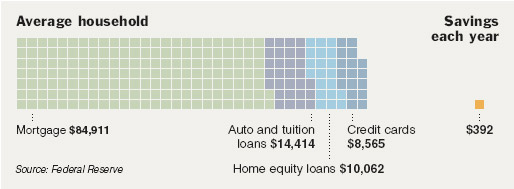| Want to send this page or a link to a friend? Click on mail at the top of this window. |
More Special Reports |
| Posted July 20, 2008 |
| Business |
|
|
| A series about the surge in consumer debt and the lenders who made it possible. |
| Given a Shovel, Digging Into Debt |
| By GRETCHEN MORGENSON |
 |
| Borrowing to Shop |
| A Rising Tide of Bills |
| That First Credit Card |
| Wehaitians.com, the scholarly journal of democracy and human rights |
| More from wehaitians.com |